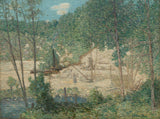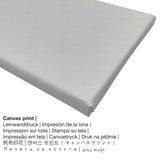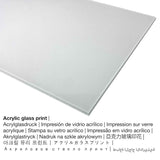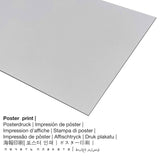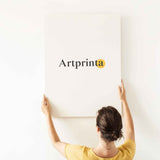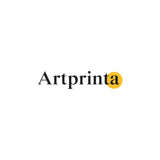J. Alden Weir, 1908 - Owuwu nke Dam - ọmarịcha nka
Ụtụ gụnyere. Mbupu gbakọrọ na ndenye ọpụpụ.
Nkọwa ngwaahịa nka
Nkuzi The Building of the Dam e kere ya J. Alden Weir in 1908. The version of the artwork was painted with the size of Framed: 93,5 x 118,5 x 7,5 cm (36 13/16 x 46 5/8 x 2 15/16 in); Unframed: 76 x 101,6 cm (29 15/16 x 40 in) and was made with the Usoro of mmanụ na kwaaji. Ọkachamara ahụ nwere ederede dị ka ndetu: signed lower right: "J. Alden Weir". Nke a mpempe nka nwere ike anya na nchịkọta nke Velọ ihe ngosi nka nke Cleveland. We are glad to reference that this masterpiece, which is part of the public domain is included with courtesy of Velọ ihe ngosi nka nke Cleveland. : Purchase from the J. H. Wade Fund. Furthermore, alignment of the digital reproduction is odida obodo ma nwee oke nke 4: 3, nke pụtara na ogologo bụ 33% ogologo karịa obosara.
Ngwa ngwaahịa dị
Anyị na-enye ihe dị iche iche dị iche iche na nha maka ngwaahịa ọ bụla. Ya mere, anyị na-enye gị ohere ịhọrọ n'ime nhọrọ ndị a:
- Ihe odide acrylic glass: A glossy print on acrylic glass, often referred to as a fine art print on plexiglass, will transform your favorite original into marvellous home decoration. Your work of art will be made with the help of state-of-the-art UV direct print technology. The major benefit of a plexiglass print is that sharp contrasts and minor details will be visible with the help of the delicate gradation.
- Poster (akwa akwa akwa): The poster is a printed sheet of cotton canvas with a granular texture on the surface. The poster print is suited for framing the art replica in a custom frame. Please keep in mind, that depending on the size of the poster print we add a white margin of something between 2-6 cm round about the print, which facilitates the framing with a custom frame.
- Mbipụta aluminom (aluminium dibbond): An Aluminium Dibond print is a print with an impressive depth effect. The bright and white parts of the original work of art shine with a silky gloss but without any glow. Colors are vivid and luminous, the fine details appear crisp, and you can notice a matte appearance of the fine art print.
- Mbipụta kwaaji: A printed canvas, which should not be mistaken with a real artwork painted on a canvas, is a digital copy printed from a UV direct printing machine. Hanging your canvas print: Canvas prints are relatively low in weight, meaning that it is easy to hang up your Canvas print without extra wall-mounts. Canvas prints are suitable for any type of wall.
Ederede iwu dị mkpa: We try everything to describe our products with as many details as possible and to demonstrate them visually in our shop. Nonetheless, the pigments of the printing material, as well as the imprint might vary marginally from the representation on the device's screen. Depending on the screen settings and the nature of the surface, color pigments might not be printed as realistically as the digital version depicted here. Given that all our are printed and processed manually, there might as well be slight discrepancies in the motif's exact position and the size.
Nkọwapụta ngwaahịa
| Nkewa ngwaahịa: | nka nka |
| Mmeputakwa: | dijitalụ mmeputakwa |
| Produzọ mmepụta: | Mbipụta UV / dijitalụ |
| Nlụpụta: | arụpụtara na Germany |
| Ụdị ngwaahịa: | na mmepụta ihe |
| A na-atụ aro iji ngwaahịa eme ihe: | nka mgbidi, mkpokọta nka (mmeputakwa) |
| Nhazi: | nhazi odida obodo |
| Oke akụkụ onyonyo: | ogologo ruo obosara 4: 3 |
| Mmetụta akụkụ: | ogologo bụ 33% ogologo karịa obosara |
| Akụrụngwa dị: | akwụkwọ mmado (akwụkwọ kwaaji), mbipụta enyo acrylic (nwere ezigbo mkpuchi iko), mbipụta akwa akwa, mbipụta ọla (aluminium dibbond) |
| Mbipụta kanvas (akwa akwa na etiti ihe ndọtị) dị iche iche: | 40x30cm - 16x12", 80x60cm - 31x24", 120x90cm - 47x35", 160x120cm - 63x47" |
| Mbipụta iko acrylic (nke nwere ezigbo mkpuchi iko): | 40x30cm - 16x12", 80x60cm - 31x24", 120x90cm - 47x35" |
| Mpempe akwụkwọ mmado (akwụkwọ kwaaji) nha: | 40x30cm - 16x12", 80x60cm - 31x24", 120x90cm - 47x35" |
| Nha aluminom dibond (ihe aluminom) nha: | 40x30cm - 16x12", 80x60cm - 31x24", 120x90cm - 47x35" |
| Nhazi mbipụta nka: | adịghị |
Ozi ndabere ihe nka
| Aha nka: | "The Building of the Dam" |
| nhazi ọkwa: | sere |
| Nhazi nka: | nkà nke oge a |
| Nhazi oge: | 20th narị afọ |
| Year: | 1908 |
| Afọ nka: | ihe karịrị afọ 110 |
| Usoro izizi: | mmanụ na kwaaji |
| Nha izizi nka: | Nhazi: 93,5 x 118,5 x 7,5 cm (36 13/16 x 46 5/8 x 2 15/16 na); Emebereghị: 76 x 101,6 cm (29 15/16 x 40 na) |
| Ederede ihe osise izizi: | signed lower right: "J. Alden Weir" |
| Ụlọ ihe ngosi nka / ebe: | Velọ ihe ngosi nka nke Cleveland |
| Ebe ngosi nka: | Cleveland, Ohio, United States nke America |
| Ebe nrụọrụ weebụ ihe ngosi nka: | Velọ ihe ngosi nka nke Cleveland |
| Akwụkwọ ikike nka: | ngalaba ọha |
| Site n'aka: | Velọ ihe ngosi nka nke Cleveland |
| Ebe kredit nke ọrụ nka: | Ịzụta n'aka JH Wade Fund |
Tebụl nchịkọta ihe nkiri
| Aha onye nka: | J. Alden Weir |
| Obodo onye nka: | American |
| Ọrụ: | onye na-ese ihe |
| Mba onye si: | United States |
| nhazi ọkwa: | omenkà nke oge a |
| Ndụ: | 67 afọ |
| Afọ ọmụmụ: | 1852 |
| Afọ nwụrụ: | 1919 |
© Nwebiisinka | Artprinta (www.artprinta.com)
Nkọwa ndị ọzọ sitere na webụsaịtị ihe ngosi nka (© Nwebiisinka - site na Cleveland Museum of Art - Velọ ihe ngosi nka nke Cleveland)
This painting shows the construction of the Scotland Dam, built between 1907 and 1909 on the Shetucket River near the artist's home in Windham, Connecticut. Unlike painters from the Ash Can School, such as John Sloan and George Bellows who tended to portray more sordid views of urban life, Weir hid a potentially ugly industrial scene behind trees and foliage. He used a silver palette with pastel blues and greens to mask the construction equipment behind a veil of natural beauty. Early in his career, Weir was interested in drawing and design and used a conservatively dark palette. Under the influence of his friends Albert Pinkham Ryder, John Henry Twachtman, and Theodore Robinson, the artist's palette lightened in the late 1880s, and by the 1890s he had developed his Impressionist style.

